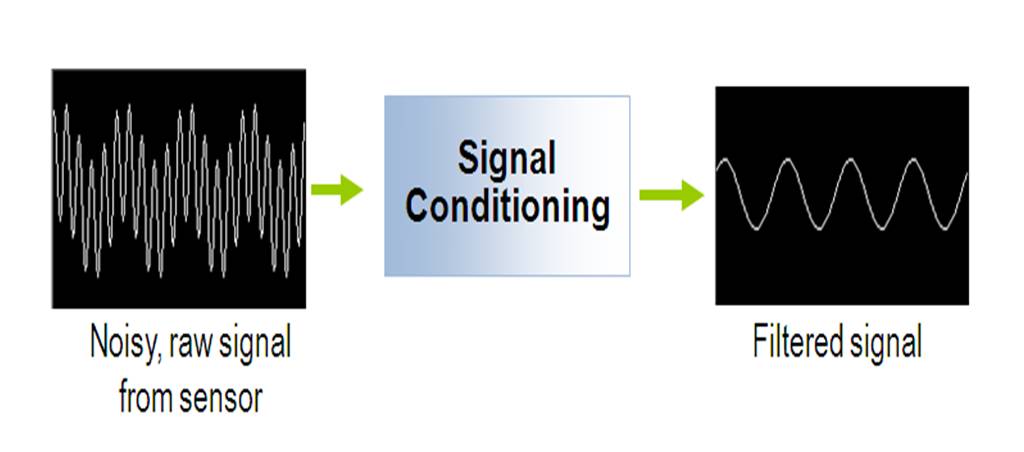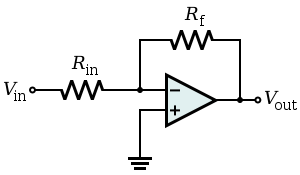-
Notifications
You must be signed in to change notification settings - Fork 7
Signal Conditioning
#Definition
In electronics, signal conditioning means manipulating an analog signal in such a way that it meets the requirements of the next stage for further processing.
#Input&Output
##Input
Signal conditioning stage receives the output of sensor. Signal inputs from sensors include:
DC Voltage, DC Current, AC Voltage, AC Current, Frequency, Electric Charge
##Output Voltage, Current, frequency, timer or counter, relay, resistance or potentiometer, and other specialized outputs.
#Signal conditioning processes
##Filtering
Filtering is the most common signal conditioning function, as usually not all the signal frequency spectrum contains valid data. The common example is 60 Hz AC power lines, present in most environments, which will produce noise if amplified.
##Amplifying Signal amplification performs two important functions:
- Increases the resolution of the input signal
- Increases its signal-to-noise ratio.
Commonly used amplifiers on signal on conditioning include sample and hold amplifiers, peak detectors, log amplifiers, antilog amplifiers, instrumentation amplifiers and programmable gain amplifiers.
##Converting
The type of signal may not meet the input requirement of processor. Through converting the type, the signal will be easy to process.
For example, DC-AC converters(inverter), Current-to-Voltage converters, Analog-to-Digital converters(ADC).
##Isolation Signal isolation must be used in order to pass the signal from the source to the measuring device without a physical connection: it is often used to isolate possible sources of signal perturbations. Also notable is that it is important to isolate the potentially expensive equipment used to process the signal after conditioning from the sensor.
#Reference
Signal Conditioning in WIKI
Filter
[Amplifier] (https://en.wikipedia.org/wiki/Amplifier)



